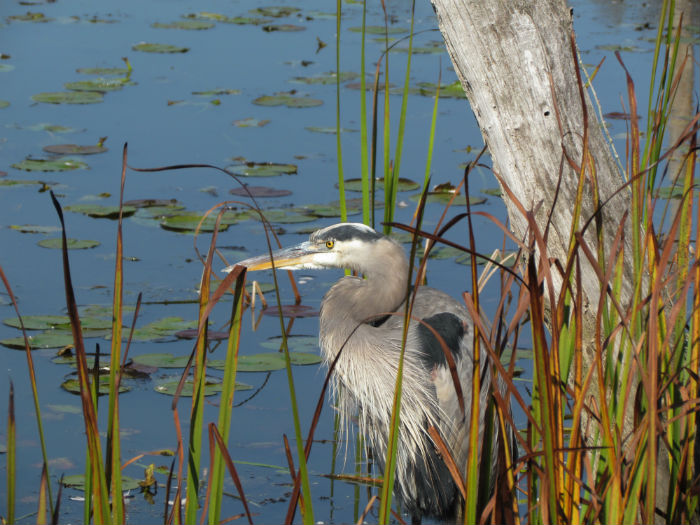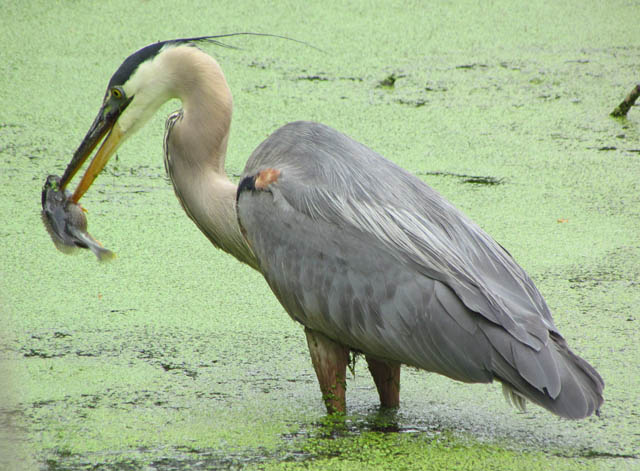Of the many bird species that inhabit wetlands, perhaps none is more iconic than the Great Blue Heron. Great Blue Herons get their name from their blue-gray plumage and their large size. A fully grown adult bird is an impressive sight. It can stand about 4 feet tall, with a wing span of 6 feet.
Great Blue Herons are one of the most widespread species of wading birds in the Western Hemisphere.
Males perform elaborate courtship displays during the mating season. They also construct nests of sticks and twigs as high as 50 or 60 feet in trees to discourage predation by animals like raccoons. Great Blue Herons use the same nests year after year, adding on to them during each breeding season. As a result, these nests can get quite large over time.
Great Blue Herons are not picky eaters. They feed on a wide range of aquatic animals, such as fish, frogs, snakes, small turtles and aquatic insects. In upland areas, they will also feed on small mammals, such as mice. These birds are solitary hunters and are rarely found in close proximity to one another.
Their feeding technique is to stand very still, watching for movement in the water by a potential food source. When the time is right, they swiftly dart their head into the water, spearing their hapless victim with their beak.













